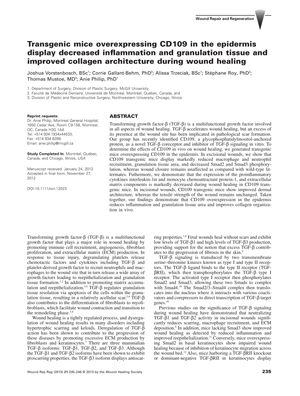Transgenic Mice Overexpressing CD109 in the Epidermis Display Decreased Inflammation and Granulation Tissue and Improved Collagen Architecture During Wound Healing
February 2013
in “
Wound Repair and Regeneration
”
CD109 epidermis inflammation granulation tissue collagen architecture wound healing TGF-β macrophage neutrophil cytokines Smad2 Smad3 dermal architecture incisional wounds tensile strength therapeutic target scarring skin wound repair immune cells healing process skin structure healing strength healing improvement

TLDR Mice genetically modified to produce more CD109 in their skin had less inflammation and better healing with less scarring.
In the study from 11 years ago, transgenic mice with overexpressed CD109 in their epidermis showed reduced inflammation, less granulation tissue, and improved collagen architecture during wound healing, without affecting the rate of wound closure. CD109, acting as a TGF-β coreceptor and inhibitor, led to decreased macrophage and neutrophil recruitment, reduced proinflammatory cytokines, and less phosphorylation of Smad2 and Smad3. The transgenic mice also had improved dermal architecture in incisional wounds, although the tensile strength was unchanged. The study, with a sample size of n = 6 per experimental group, suggests that CD109 could be a therapeutic target for enhancing wound healing and minimizing scarring.



